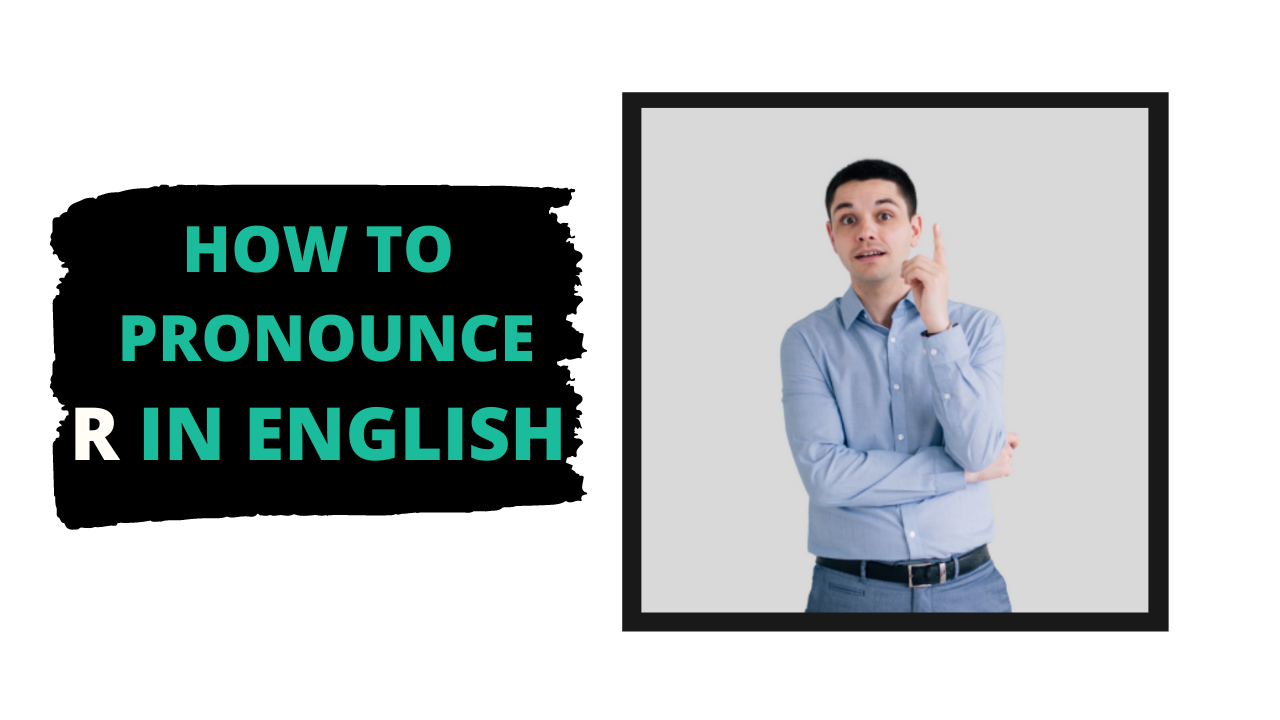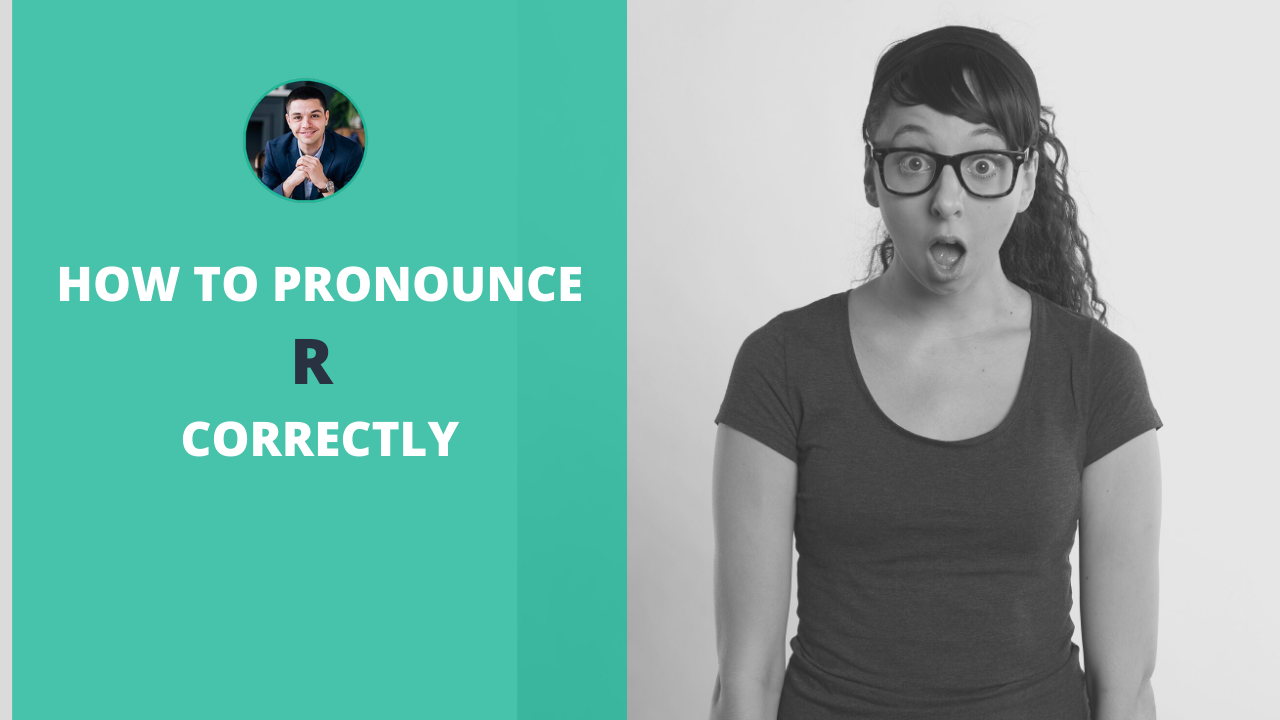How To Pronounce R in English - Tips and Tricks

The R sound is one of the most difficult sounds for English language learners to pronounce correctly. It is a challenging sound for English learners to produce because it either has a different sound in other languages or it does not exist at all.
When a sound from a language you are learning doesn’t exist in your mother-tongue language, you automatically produce the sound closest to it from your mother-tongue language. This can create confusion and miscommunication - especially when the incorrect sound changes the word entirely.
We must not confuse accents and pronunciation. It’s perfectly fine to have an accent, but it becomes a problem when an accent inhibits understanding. For example, ‘rice’ becomes ‘lice’ when the /l/ sound takes the place of the /r/ sound.
How to Improve Pronunciation of Letter R
Improving the letter R sound pronunciation in English takes a lot of practice. Firstly, you will need to familiarise yourself with the mouth and tongue position to create the R sound. Thereafter, you can start practicing it in words and then sentences.

You can start by practicing the R sound at the beginning (run, rat, rat), in the middle (error, correct, girl) and at the end of words (teacher, hire, hear). Remember to practice letter R consonant clusters too like scream, dream, cry, fry, break, and streak.
How To Pronounce R Correctly
There are two ways to produce the letter R sound. While the ways to produce it are different, they do produce the same sound.
The first way to produce the R sound is to pull your tongue up and flat at the top of your mouth. Your tongue should fill the space between your teeth and touch your teeth on either side. Focus on touching the sides of your tongue to the area where the teeth and gums meet.
There should be a gap above the tongue to allow the air to move through. The letter R is not a nasal sound like the /ng/ sound in English, so don’t stop the air from flowing through the mouth.
The second option is to touch the tip of the tongue to the ridge of the palate where the roof of the mouth goes up behind the teeth. The rest of the tongue must stay low at the back of the mouth.
You will likely find that there are times when it’s more comfortable to use the first method and other times when it’s easier to use the second. This will depend on the sounds surrounding the R sound in a word.
What Not To Do To Pronounce The R Sound
You must not block off the air from flowing through the mouth when producing the R sound. It is not a nasal sound so the sound must not come through the nose. You also mustn’t touch the front teeth with the tongue. This will not produce the correct sound.
In English, the R sound is not a tapped sound like /d/ or /t/ , so make sure that you can produce the sound for a long time instead of one quick sound. Practice making a long /rrrrrrrrrr/ sound instead of a /r/ /r/ /r/ sound.
Pronunciation R Problem
A lot of second-language English speakers struggle to produce the letter R sound because it doesn’t exist in their mother-tongue language. This means that the R sound gets replaced by an entirely different sound.
Changing one sound for another is a dangerous habit to form because it can be difficult to break. It will be easier to correct these errors if you are not too far along in your English language journey - but it’s never too late to work on the R sound and improve your English pronunciation.
If your mother-tongue language has a strongly rolled R sound, then you shouldn’t worry too much as the R sound will showcase your accent but it shouldn’t inhibit understanding. Some English accents like Scottish and Irish have the rolled R sound too.

Most people struggle with getting the tongue position right . This is challenging because it’s difficult to see what is happening inside the mouth of a native English speaker. It’s best to look at diagrams of tongue position when making the R sound to ensure that you know exactly where the tongue goes.
What is English Everyday
English Everyday is an English course with 24/7 live speaking lessons for English learners who want unlimited speaking practice with native speakers, professional teachers, and students from around the world.
You have live speaking lessons where you can join an unlimited amount of lessons every day. There's a lesson almost every hour and you can join all of them and also, you can review all record lessons. English Everyday contains a lot of conversation practice for each level of English (A2, B1-B2, C1), and also you have a calendar of scheduled lessons so you can see when lessons are and at what time you can join and start speaking.
In English Everyday program, you have 24/7 support and also you have student chat where you can speak with other students from all around the world. You can look at our feedback page so that you can know from which countries our students are. Before you join our program, we strongly recommend you sign up for our free seminar with Kris Amerikos, where you can learn:
- What goals you need to have to get better results
- How to become fluent in English very quickly
- What you need to do to have perfect pronunciation
- The 3 biggest mistakes you need to avoid
- Which free resources will help you learn English
- The best resource to use to improve your speaking
R Pronunciation Practice
The best way to improve your pronunciation of the letter R sound in English is to learn the mouth position and position of the tongue first. It’s important to understand where the sound is produced and how it’s produced. You need to focus on the tongue position and mouth shape required to make the sound before you can use the sound in a word.
Once you are familiar with the shape of the mouth and the position of the tongue, you can move on to practicing minimal pairs. Minimal pairs are two words that have the exact same sounds except for the sound that you want to practice.
The minimal pairs you choose will depend on the sound that you make in place of the R sound. For example, most Asian languages don’t have the R sound; which results in Asian English learners making the letter L sound in its place. Practicing words that have the same sound with only the L and R differences will help Asian English learners produce the correct sound.
Minimal Pairs /l/ And /r/
Lice Rice
Long Wrong
Arrive Alive
Play Pray
Stray Slay
Flight Fright
Another common replacement for the letter R sound is the letter W sound. This is most common when the R sound is the beginning sound of a word.
Minimal Pairs /r/ And /w/
Rich Which
Right White
Ring Wing
Rag Wag
Ray Way
Rail Whale
Practice these words next to each other and record yourself to ensure that you pronounce these words correctly. If you can hear the difference, you have succeeded. If you can’t hear the difference, go back to practicing getting your mouth around the letter R sound.
Once you have mastered the letter R sound in minimal pairs, you can move on to practicing tongue twisters. Tongue twisters are a great way to get comfortable with changing your mouth shape and producing the sound in full sentences.
Letter R Sound Tongue Twisters
Ten really rowdy rabbits run around the room.
The rich witch remembers.
Richard really likes rolling down the hill.
Red lorry, yellow lorry, red lorry, yellow lorry.
R Sound Tongue Position
The tongue can either be placed up and flat between the upper teeth or the tip of the tongue can be placed firmly on the palate ridge behind the teeth.
In the first position, the tongue must touch the upper molars on either side where the gum and teeth meet. The tip of the tongue simply floats at the front of the mouth without touching the teeth. The middle part of the tongue is the highest and fills out the entire upper region of the mouth. If you put your finger into your mouth, you must be able to feel a space between the top of the tongue and the palate.
In the second position, the tip of the tongue must firmly touch the ridge of the palate behind the teeth. The tongue must not touch the front teeth. The rest of the tongue must flatten towards the back.
You can choose whichever tongue position is more comfortable for you. Either way, it will produce the same sound.
American R Pronunciation
The American R is particularly difficult to pronounce. The British and American accents differ in the pronunciation of the R sound. In British English, it is a weak sound that is often almost entirely ignored. In American English, the R sound is a strong and emphasized sound.
Words like heart, hurt and girl sound very different with American pronunciation when compared with British pronunciation.
At the end of a word, the American R pronunciation is a hard and clenched sound. To perfect the American R sound, start by practicing the R sound at the beginning of words like row, run and rest. Then become aware of your mouth shape and repeat that same shape at the end of words like stir, her, and fur.
Best Tips To Learn How to Improve Pronunciation of R
Follow these tips to improve your pronunciation of the R sound in English.
Practice The R Sound:
Experiment with the different tongue positions that we’ve gone through in this blog and find what works for you. Practice minimal pairs to perfect your pronunciation of the individual sound.
Have Fun With It:
It’s usually a lot easier to make a difficult sound in English when you add a vowel next to it. Think of the sound a dog makes when it’s barking. Add the A sound to the R sound and imitate a dog barking: /rarararara/
Practice barking like a dog, growling like a bear or say ‘argh’ like a pirate. It may seem strange at first, but if you’re learning English at home then no one is around to judge you. Incorporating some fun activities into learning will also ensure that you remember the sound.
Use Hand Movements To Guide You:
Don’t be afraid to get your whole body involved in the process. Use your hands to imitate the movement of your tongue as you say a word to fully focus on the movement of the tongue. This will help you produce the correct sound. And remember to start slowly first and get faster and faster.
Practice Diphthongs:
Diphthongs are vowel sounds that have two vowel sounds blended together without a consonant in between.
Some diphthongs have an ending R sound:
/eə/
Hair
Fair
Stair
Pair
Care
/ɪə/
Here
Fear
Near
Rear
Steer
/ʊə/
Tour
Cure
Pure
Listen And Repeat
Listen to native English speakers saying words with the R sound and repeat them. Then you must record yourself so that you can compare your pronunciation with the native English speaker’s pronunciation. It’s easier to be objective about your pronunciation when you listen to a recording.
Get A Native English Speaker To Help You
If you’re struggling to produce the sound, then find a native English speaking partner who can help correct you when you mispronounce words with the R sound. Tell your English speaking partner that you want to improve your pronunciation of the R sound. They will be more than happy to correct you.









































